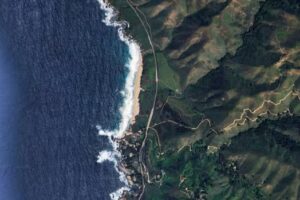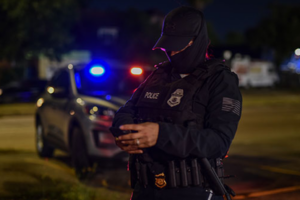
Listen to this article
Estimated 5 minutes
The audio version of this article is generated by text-to-speech, a technology based on artificial intelligence.
Transport Canada will be surrendering most — if not all — of its aviation wing to the Department of Defence in a plan that’s shrouded in secrecy.
The move of the federal department’s “core aviation services” was flagged in the recent federal budget. It has the potential to affect the long-standing National Aerial Surveillance Program (NASP), which monitors the country’s three coastlines for pollution and marine wildlife.
Those services “will be restructured, transferring most core aviation services, functions and assets to the Department of National Defence, while seeking to leverage commercial offerings where appropriate,” said the budget presented by Finance Minister François-Philippe Champagne on Nov. 4 and passed by the House of Commons on Monday.
The budget underlined that Transport Canada‘s regime of “training and certification of pilots will be maintained, with no impact on commercial and non-commercial pilots in Canada.”
Since the budget was presented, CBC News has repeatedly asked for clarification and an explanation of the transfer.
Both Transport Canada and the Finance Department refused to explain the implications, which are significant given that Transport Canada operates a fleet of roughly 52 aircraft (of those 24 are owned, the rest leased) and has taken possession of a brand-new Israeli-made drone for Arctic surveillance.
“The Department of Finance Canada is best suited to respond to your questions,” said Flavio Nienow, a spokesperson for Transport Canada in a recent email.
WATCH | Fresh effort to protect the Arctic:
Canadian Forces are training to protect the Arctic — but rival nations aren’t the only risk
CBC News has exclusive access to Canada’s annual military exercises in the Arctic, which have grown in importance and urgency as climate change opens up the water and makes the Far North more attractive to powers like Russia and China.
Officials at Finance were even less forthcoming.
“The initiative you are referring to is part of Transport Canada’s plan to meet its savings target under the Comprehensive Expenditure Review. More details about this plan will be communicated in due course,” said a spokesperson who refused to be named.
Much like the recent absorption of the Canadian Coast Guard into the Defence Department, the transfer of Transport Canada’s civilian fleet has a similar ad-hoc vibe.
Mario Pelletier, the commissioner of the coast guard, was before a House of Commons committee recently and could shed little light on what the integration of his service with the Defence Department looks like beyond the new mandate to share surveillance and intelligence with the military.
Crucial questions about how that data will be shared and whether the coast guard could defend itself if it ran into a dangerous situation remain unclear.
Prime Minister Mark Carney meets with members of the Canadian Armed Forces during a visit to Canadian Forces Base (CFB) 8 Wing Trenton in Trenton, Ont., on Friday, Aug. 8, 2025. (Spencer Colby/The Canadian Press)
“Right now we’re not looking at defending, because we’re not looking at being in a theatre where there would be confrontation,” Pelletier told the Commons defence committee on Oct. 21.
“Right now we’re looking at occupying a space that can be occupied and where we can collect information and pass it on to our colleagues at DND.”
How the Transport Canada fleet and facilities will fit into the military’s surveillance picture is equally fuzzy.
What we do know is the addition will — like the coast guard — also count towards Canada’s commitment of spending five per cent of the gross domestic product on defence, in keeping with the new benchmark for NATO allies.
“Let’s be frank, the reason this is happening is to increase the percentage of gross domestic product that Canada spends on defence,” said University of British Columbia political and defence expert Michael Byers.
“I think this is driven by that defence-spending imperative. Trying to build up to those magic numbers that Donald Trump wants without thinking it through in terms of: How do you fulfil those essential civilian functions that the coast guard and Transport Canada fulfil?”
The move is significant on a number of levels. Because of a lack of available aircraft and a refusal to pay dedicated pilot overtime, NASP surveillance of the Arctic was scaled back last summer to an “on-call” posture.
The department in September took possession of an Elbit Systems-made Hermes 900 Starliner drone, first ordered back in 2020, for Arctic surveillance.
It has yet to deploy the unmanned system and it is unclear how the $36 million drone, complete with a ground station package, will fit within the framework of the Royal Canadian Air Force, which has ordered — but yet to take delivery of — a completely separate fleet of MQ-9 Reaper drones, built by U.S. defence contractor General Atomics.
The Hermes was intended for civilian missions (its Israeli military variant is known as the Kochav) and its acquisition is just one part of Canada’s Arctic Unmanned Aircraft System Initiative.
Both Russia and China have increased their presence in the Arctic outside of Canada looking for new resources and new shipping routes. Moscow has tested a fleet of dual-use extreme-weather UAVs, while China is in the development stage for similar technology.
Transport Canada maintains a fleet including both fixed-wing planes and helicopters, used primarily for the NASP and other government support operations.
The department has four dedicated bases and leases space at nine coast guard facilities. In addition, it is uncertain whether Transport Canada-owned land at 26 airports across the country will be part of the transfer.





